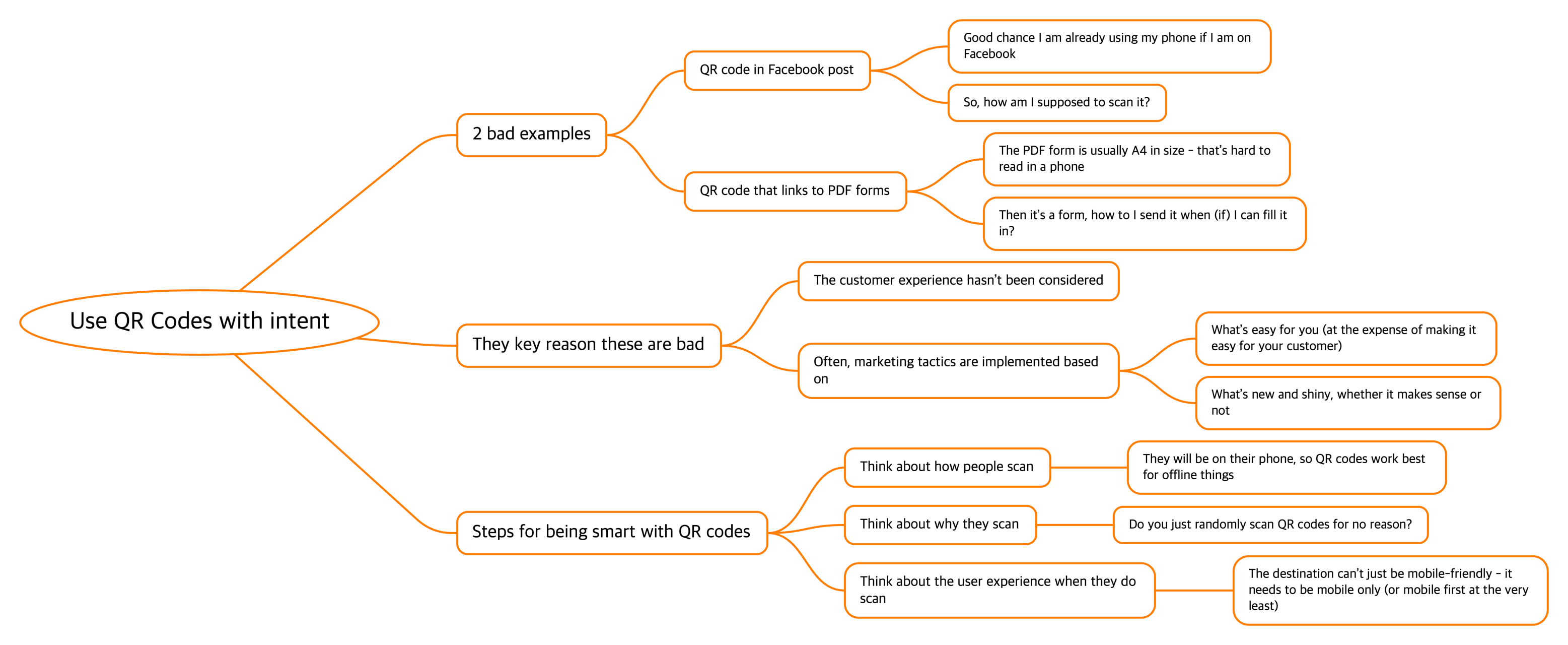QR codes have become a staple in our daily lives, especially after COVID-19 pushed them into the mainstream. Whether you’re scanning a menu at a restaurant or accessing a digital resource, QR codes offer a quick and easy way to connect offline experiences with online content.
But here’s the thing—not all QR codes are created equal. Many businesses implement them without much thought, leading to poor user experiences that frustrate customers rather than helping them.
In this post, let’s look at two common QR code mistakes and how to avoid them. Plus, I’ll share three essential tips to make sure your QR codes are actually working for your audience.
Common QR Code Mistakes to Avoid
1. Using QR Codes in Digital Spaces (Like Facebook Posts)
QR codes are meant to be scanned by a phone camera, but if your audience is already on their phone—how can they scan it?
Imagine scrolling through Facebook and seeing a QR code in a post. You’d have to:
- Grab another phone to scan it (not convenient).
- Try a complicated setup with mirrors (let’s be honest, no one’s doing that).
The fix:
If you’re sharing content digitally, use direct links instead of QR codes. Save QR codes for offline materials where they actually make sense—like posters, flyers, and business cards.
2. Linking to a PDF (Or Other Unfriendly Mobile Content)
Let’s talk about bad user experiences.
One common mistake is linking QR codes to PDF documents that aren’t optimised for mobile devices. When users scan the code and land on a clunky, hard-to-read A4-sized document, they’re forced to zoom, pinch, and struggle to navigate the content.
And if that PDF happens to be a form? Good luck filling it out on your phone.
The fix:
Make sure your QR code destinations are mobile-first or mobile-only. Instead of linking to a PDF, consider using a mobile-only dedicated landing page with simple, easy-to-navigate content.
3 Tips for Smarter QR Code Usage
So, how can you make sure your QR codes actually enhance the customer experience instead of frustrating them? Here are three key tips:
1. Use QR Codes in the Right Context
Think about where people will be when they encounter your QR code. The best applications are in offline spaces where customers can easily access their phone’s camera—like:
- Business cards
- Posters and brochures
- Product packaging
- Storefront displays
A great example? Placing a QR code on office equipment to allow users to quickly submit service requests by scanning the code with their phone.
2. Give Customers a Clear Reason to Scan
People don’t randomly scan QR codes just because they see them. There needs to be a clear incentive or purpose behind the scan, such as:
- Saving contact information from a business card
- Accessing exclusive content (checklists, worksheets, special offers)
- Registering for an event or signing up for a service
Make sure your QR code provides value and communicates that value clearly to your audience.
3. Optimize the Destination for Mobile Users
Even if your website is mobile-friendly, a QR code should direct users to a dedicated landing page designed specifically for mobile use. Keep it simple and focused on the action you want them to take.
For example, if someone scans a QR code for a special offer, they shouldn’t have to navigate your entire website to find it—it should take them straight to the right page.
Pro tip: A mobile-optimised page might not look great on a desktop, and that’s okay! Prioritise the phone experience first.
